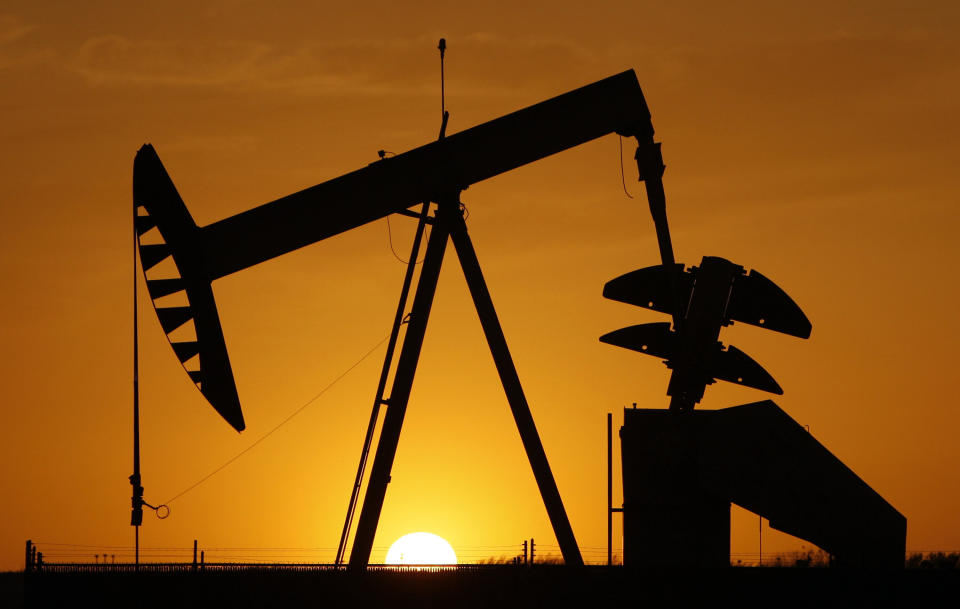Why consumers should expect higher prices for a lot of things this summer
Geopolitical tensions around the world are converging and could soon create pain for consumers in the forms higher prices on stores shelves and at the gasoline pump.
Barely a week after the Trump administration slapped higher tariffs on $200 billion of Chinese goods, both sides dug in their heels. The prospect of a prolonged trade war, and competing bilateral tariffs, has created alarm among economy watchers and big companies.
This week, Walmart warned that higher prices would translate into higher costs for its customers. The largest U.S. retailer echoed the sentiments of retail companies around the U.S, who have stated that import duties would be passed along to consumers.
The threat of higher retail prices comes at a pivotal juncture, and could pack a one-two inflationary punch with higher gas. Crude prices, which have rallied more than 30% in 2019 and pushed up gas prices, are being spurred by turmoil in the Middle East and Venezuela.
Even though the U.S. shale boom has the world’s largest economy churning out record amounts of crude, production from key OPEC countries has fallen sharply within the last year. The reduced foreign supply could make energy prices vulnerable to a spike, some analysts say.
And with tensions rising between the U.S. and Iran, “we think an escalation of tensions around Iran could possibly be the most underestimated tail risk over the course of the next 12 months,” economists at Bank of America said in research this week.
Although oil prices haven’t priced it in just yet, “the risk of a military confrontation is higher now than it has been in the previous decade," BofA added.

Should oil sustain its rally, fuel prices—which recently hit a high for the year at close to $3 per gallon —could rise again as the summer driving season shifts into high gear. The impact on prices could get worse if trade talks worsen, or break off altogether.
“Demand is pulling crude lower, but escalation and supply constraints” are propping up prices, noted Rebecca Babin, senior energy trader at CIBC Private Wealth Management.
Geopolitical tensions are “definitely been the bid to crude,” she said. “Consumers will feel this toward the end of the year if prices go up on gasoline and other goods.”
Don’t count on a Fed cut...Yet
The difference between interest rates on 2-year and 10-year Treasury debt, a part of the yield curve that’s sensitive to inflation expectations could “pop” if trade talks get derailed, BofA said. That would result in a drop in short-term interest rates, steepening the yield curve.
An open debate on Wall Street is whether a currently neutral Federal Reserve will cut rates if the economic outlook worsens.
President Donald Trump has already stated that the Fed should ease monetary policy to help him win the trade war — and that request could become a clarion call if negotiations head south, and an oil price spike causes pain at the pump.
If U.S.-China trade talks falter, "…the duration call becomes a Fed call,” BofA economists said last week.
“Price action is likely dominated by significant risk-off moves, and the market will not hesitate to price in Fed cuts aggressively ahead of the Fed's actual decision.”
Yet talk of a Fed cut may be premature, if not entirely unlikely. Fluctuating energy prices are a wild card for price pressures, but something the central bank usually discounts in its policy moves.
Moreover, at least for right now, global demand doesn’t appear sufficient enough to boost Brent crude much further than its current $60-$75 range.
“You will start to see rising prices, but I don’t think the Fed is going to be super-focused on energy prices in their decision making process, because they consider it to be a transitory factor,” Babin said.
Javier is an editor for Yahoo Finance. Follow Javier on Twitter: @TeflonGeek
Read more:
Trump calls on the Fed to cut rates while praising China's 'great' stimulus
Self-proclaimed Tesla bull says Q1 was one of the worst debacles he's seen in 20 years
Goldman Sachs: Trump has 'narrow' shot in 'close call' election bid
Follow Yahoo Finance on Twitter, Facebook, Instagram, Flipboard, SmartNews, LinkedIn, YouTube, and reddit.
